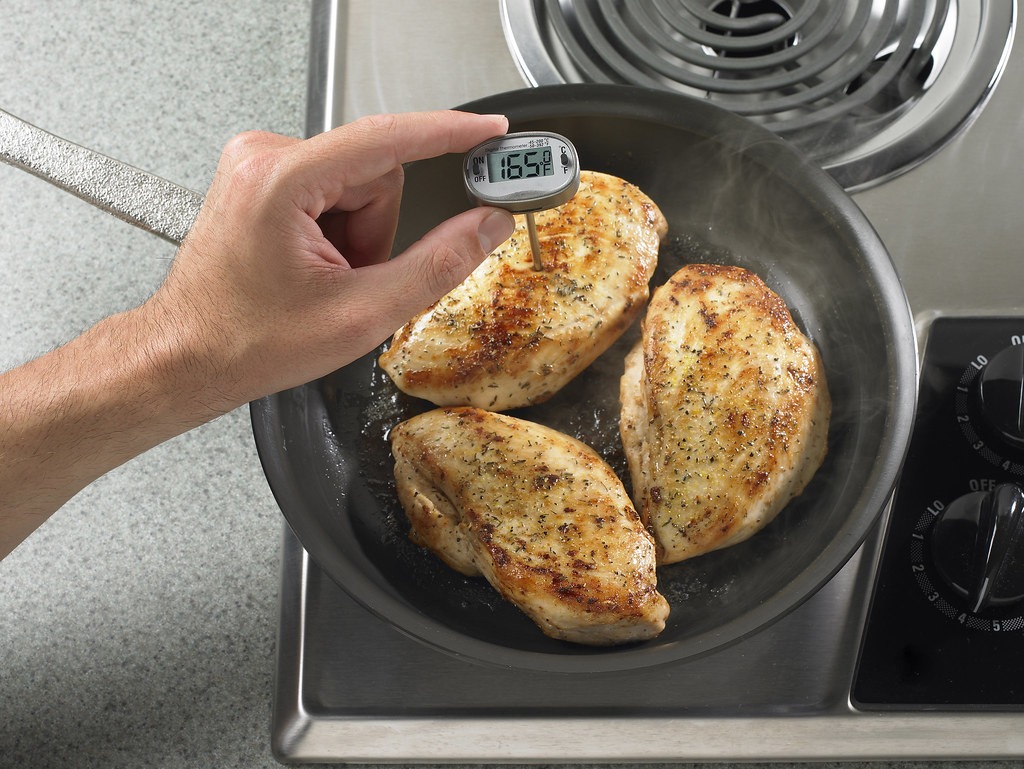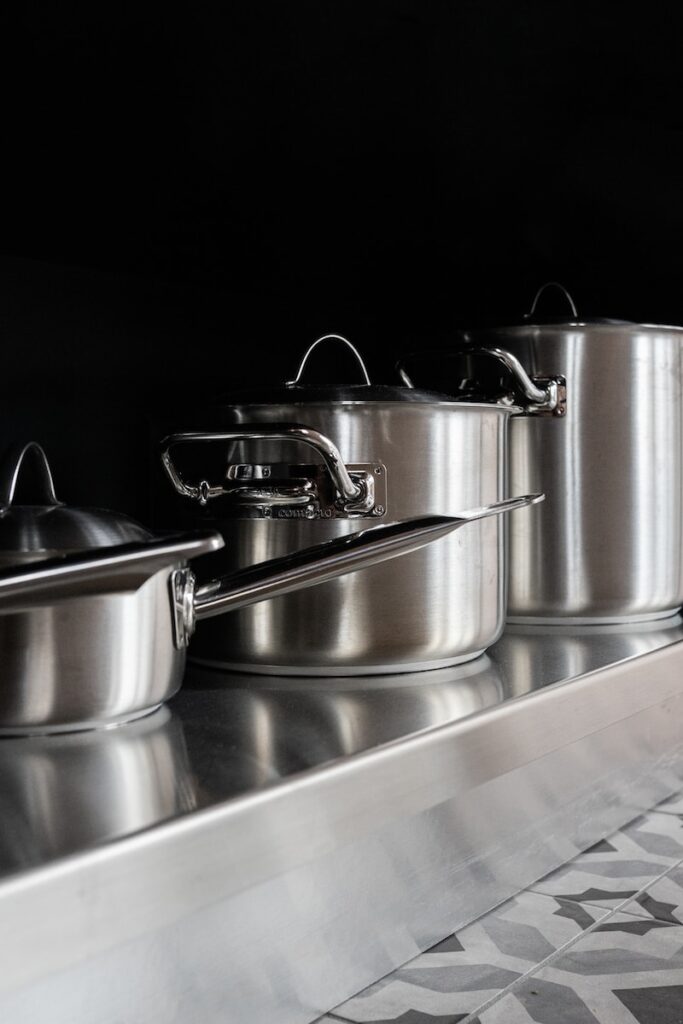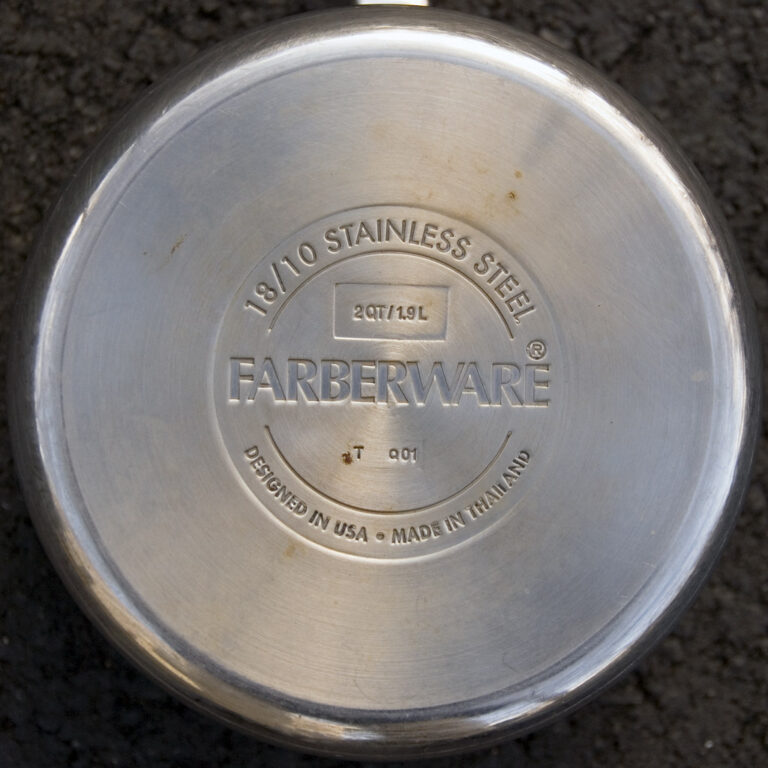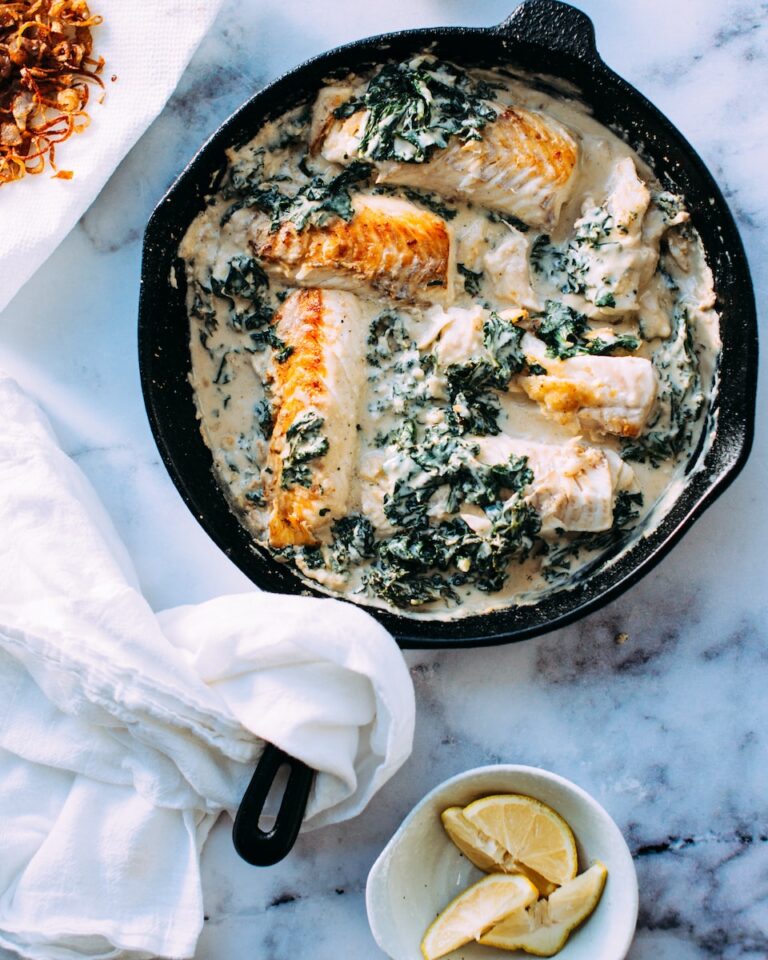I’ve always been curious about the safety of the cookware I use in my kitchen. That’s why I decided to take a closer look at PFOA-free cookware.
In this article, I’ll explore the benefits of using PFOA-free cookware, different types available, and the science behind these coatings.
I’ll also provide tips for choosing the best PFOA-free cookware and how to properly maintain it.
So, join me as we dive into the world of PFOA-free cookware.
Key Takeaways
- PFOA, or perfluorooctanoic acid, is a chemical used in non-stick cookware production.
- PFOA exposure has been linked to health risks such as cancer and developmental issues.
- Consumers should choose cookware labeled as PFOA-free to minimize exposure.
- Ceramic and stainless steel are safe nonstick alternatives to PFOA-containing cookware.
Understanding PFOA and Its Health Concerns
I’m aware of the health concerns surrounding PFOA and its presence in cookware. Understanding PFOA regulation is crucial in order to protect ourselves from potential health risks.
PFOA, also known as perfluorooctanoic acid, is a chemical that has been used in the production of non-stick cookware. However, studies have shown that PFOA can be harmful to human health.
The Environmental Protection Agency (EPA) has taken steps to regulate and reduce the use of PFOA in various industries, including cookware manufacturing. This is because PFOA exposure has been linked to various health risks, such as kidney and testicular cancer, thyroid disease, and developmental issues in infants and children.
It’s important for consumers to be informed about PFOA and choose cookware that’s labeled as PFOA-free to minimize their exposure to this potentially harmful chemical.
Exploring the Benefits of PFOA-Free Cookware
I’ve been researching the advantages of using cookware that’s free from harmful chemicals like PFOA. It’s important to consider the health concerns associated with traditional non-stick cookware and explore the benefits of making the switch to PFOA-free options.
Here are some key advantages I’ve discovered:
Health Benefits:
- PFOA-free cookware eliminates the risk of exposure to toxic chemicals that can be released when cooking at high temperatures.
- It ensures that no harmful substances leach into your food, promoting a healthier cooking experience.
Performance Benefits:
- PFOA-free cookware is typically more durable and scratch-resistant, providing long-lasting performance.
- It allows for even heat distribution, preventing hot spots and ensuring consistent cooking results.

Different Types of PFOA-Free Cookware
When it comes to choosing PFOA-free cookware, there are various options available. From ceramic to stainless steel, each type offers its own set of benefits and features.
In the following points, I’ll discuss the safe nonstick alternatives, compare heat conductivity, and explore the durability and longevity of different PFOA-free cookware options.
Safe Nonstick Alternatives
As a health-conscious individual, I prefer using ceramic or stainless steel cookware as safe nonstick alternatives. These options provide a great way to avoid PFOA, a harmful chemical commonly found in traditional nonstick cookware. Here are the benefits of choosing non-toxic nonstick coatings:
PFOA Free Cookware Safety:
- Ceramic and stainless steel cookware are free from PFOA, a chemical that has been linked to various health issues.
- By using PFOA-free cookware, you can minimize the risk of exposure to this harmful substance.
Benefits of Non-Toxic Nonstick Coatings:
- Ceramic cookware offers excellent heat distribution, ensuring even cooking and preventing hot spots.
- Stainless steel cookware is durable, resistant to scratches, and can withstand high temperatures without releasing toxins.
Heat Conductivity Comparison
In my experience, ceramic cookware provides excellent heat conductivity compared to stainless steel options. When I first started using ceramic cookware, I was amazed at how evenly the heat was distributed throughout the pan. This allowed for more precise cooking and better results.
Whether I was searing a steak or simmering a delicate sauce, the heat conductivity of the ceramic cookware ensured that the food cooked evenly and thoroughly. This improved cooking performance has made a noticeable difference in the taste and texture of my dishes.
Additionally, the ceramic material retains heat well, allowing me to keep food warm even after removing it from the heat source.
Overall, I believe that ceramic cookware’s superior heat conductivity greatly enhances the cooking experience.
Durability and Longevity
I’ve found that ceramic cookware tends to be more durable and longer-lasting than stainless steel options. Through durability testing and customer reviews, it’s clear that ceramic cookware is built to withstand the demands of everyday cooking.
Here are a few reasons why ceramic cookware excels in terms of durability and longevity:
- Resistance to scratches and wear:
The ceramic coating on these pots and pans is designed to resist scratches, ensuring that they maintain their pristine appearance even after extensive use. Stainless steel, on the other hand, is prone to scratching, which can affect its performance and aesthetics over time.
- Heat and impact resistance:
Ceramic cookware is built to handle high temperatures without warping or cracking, making it suitable for a variety of cooking methods. Stainless steel may be durable, but it can be more susceptible to warping when exposed to extreme heat.
Overall, ceramic cookware’s durability and longevity make it a reliable choice for any kitchen.
The Science Behind PFOA-Free Coatings
The benefits of non-toxic coatings are immense, not only for our health but also for the environment.
PFOA, also known as perfluorooctanoic acid, is a harmful chemical that was commonly used in the production of non-stick coatings. However, studies have shown that PFOA can have detrimental effects on our health and the environment.
That’s why the development of PFOA-free coatings is so important. These coatings use innovative technologies to create a non-stick surface without the use of harmful chemicals.
By eliminating PFOA, we can ensure that our cookware is safe to use and doesn’t release any toxic substances into our food or the air.
This is a significant step towards a healthier and more sustainable future.

Tips for Choosing the Best PFOA-Free Cookware
When it comes to choosing the best PFOA-free cookware, there are a few tips I always keep in mind.
First, I look for cookware made from materials like ceramic or stainless steel, as these are known to be safe and durable.
Secondly, I consider the non-stick effectiveness of the cookware, ensuring that it will make cooking and cleaning a breeze.
Lastly, I read reviews and compare different options to make an informed decision.
Material Options for Pfoa-Free Cookware
For PFOA-free cookware, some material options include ceramic, stainless steel, and cast iron.
When looking for eco-friendly options, ceramic cookware is a great choice. It’s made from natural materials like clay and sand, which are non-toxic and don’t release harmful chemicals into the food.
Stainless steel cookware is also a good option in terms of being eco-friendly. It’s durable, long-lasting, and can be recycled at the end of its life.
In terms of cost considerations, ceramic cookware can be more expensive initially, but it’s known for its durability and longevity, making it a worthwhile investment in the long run.
Stainless steel cookware is also a cost-effective option, as it’s often more affordable compared to other materials.
Non-Stick Effectiveness Comparison
When it comes to non-stick cookware, the effectiveness of the coating is a crucial factor to consider. After all, who wants their food to stick to the pan? In my experience, I have found that the longevity of the non-stick coating varies depending on the brand and quality of the cookware. Some coatings can last for years with proper care, while others may start to lose their effectiveness after just a few months of use.
To give you a clearer picture, here is a comparison table showcasing the non-stick effectiveness and environmental impact of different cookware options:
| Cookware Option | Non-Stick Effectiveness | Environmental Impact |
|---|---|---|
| Option A | Excellent | Low |
| Option B | Good | Medium |
| Option C | Fair | High |
| Option D | Poor | Very High |
As you can see, there is a trade-off between non-stick effectiveness and environmental impact. It’s important to find a balance that suits your needs and values.
Maintaining and Caring for PFOA-Free Cookware
I find it important to regularly clean and properly store my PFOA-free cookware to maintain its quality and longevity. Taking care of this type of cookware requires some specific techniques and maintenance tips.
Here are a few things I do to keep my PFOA-free cookware in great condition:
Cleaning Techniques:
- Use mild dish soap and warm water to clean the cookware after each use.
- Avoid using abrasive sponges or harsh cleaning agents that can damage the non-stick surface.
Maintenance Tips:
- Avoid using metal utensils that can scratch the non-stick coating. Opt for silicone, wooden, or nylon utensils instead.
- Store the cookware in a cool and dry place to prevent any damage or warping.
Frequently Asked Questions About PFOA-Free Cookware
One common question people have is whether PFOA-free cookware is safe to use on all types of stovetops.
The good news is that PFOA-free cookware is safe to use on all types of stovetops, including gas, electric, and induction. PFOA, or perfluorooctanoic acid, is a chemical that was used in the production of nonstick cookware. However, studies have shown that PFOA can be harmful to human health and the environment.
That’s why many people are now choosing to use PFOA-free cookware alternatives. These alternatives are made without the use of PFOA or other harmful chemicals, making them a healthier option for cooking.
In addition to being safer, PFOA-free cookware also offers other health benefits. It’s non-reactive, meaning that it won’t leach harmful chemicals into your food, and it’s easier to clean, requiring less oil or butter for cooking.
Conclusion
In conclusion, choosing PFOA-free cookware is a smart choice for maintaining a healthy kitchen environment. With its non-toxic coatings, PFOA-free cookware offers numerous benefits and peace of mind.
By understanding the science behind these coatings and following proper maintenance and care tips, you can enjoy safe and effective cooking experiences. Make sure to choose the best PFOA-free cookware based on your specific needs and preferences.
Stay informed and prioritize your health in the kitchen.



